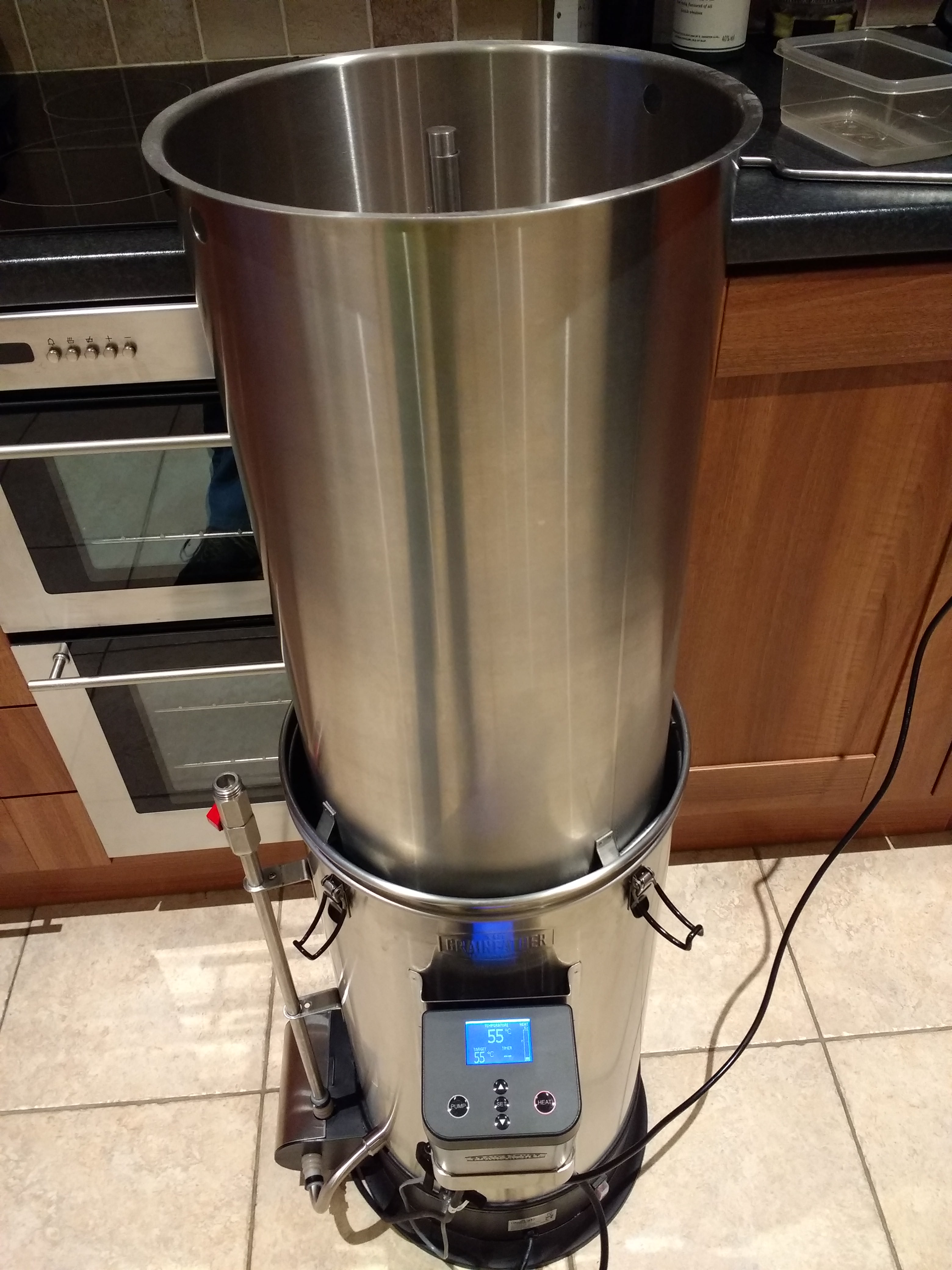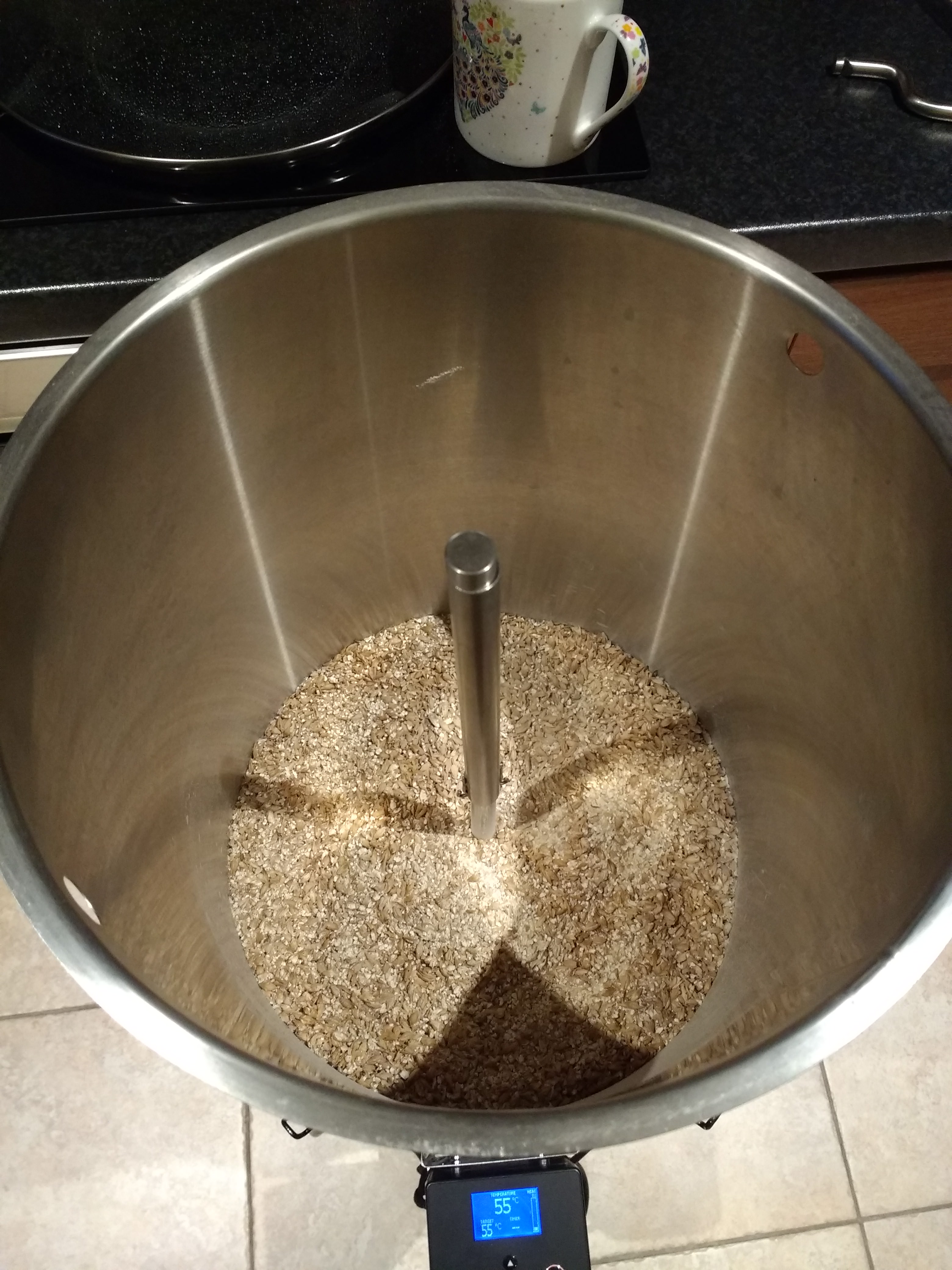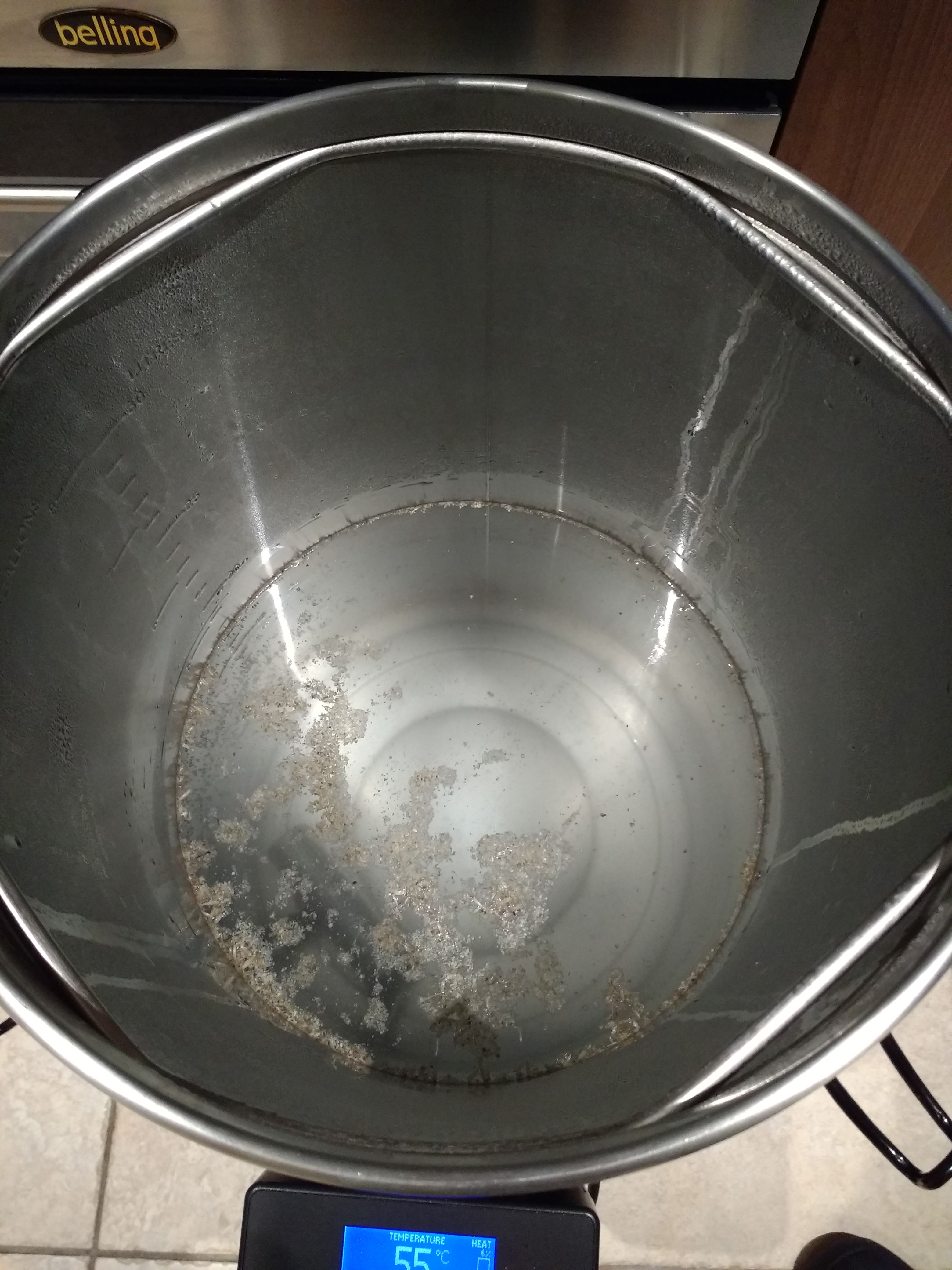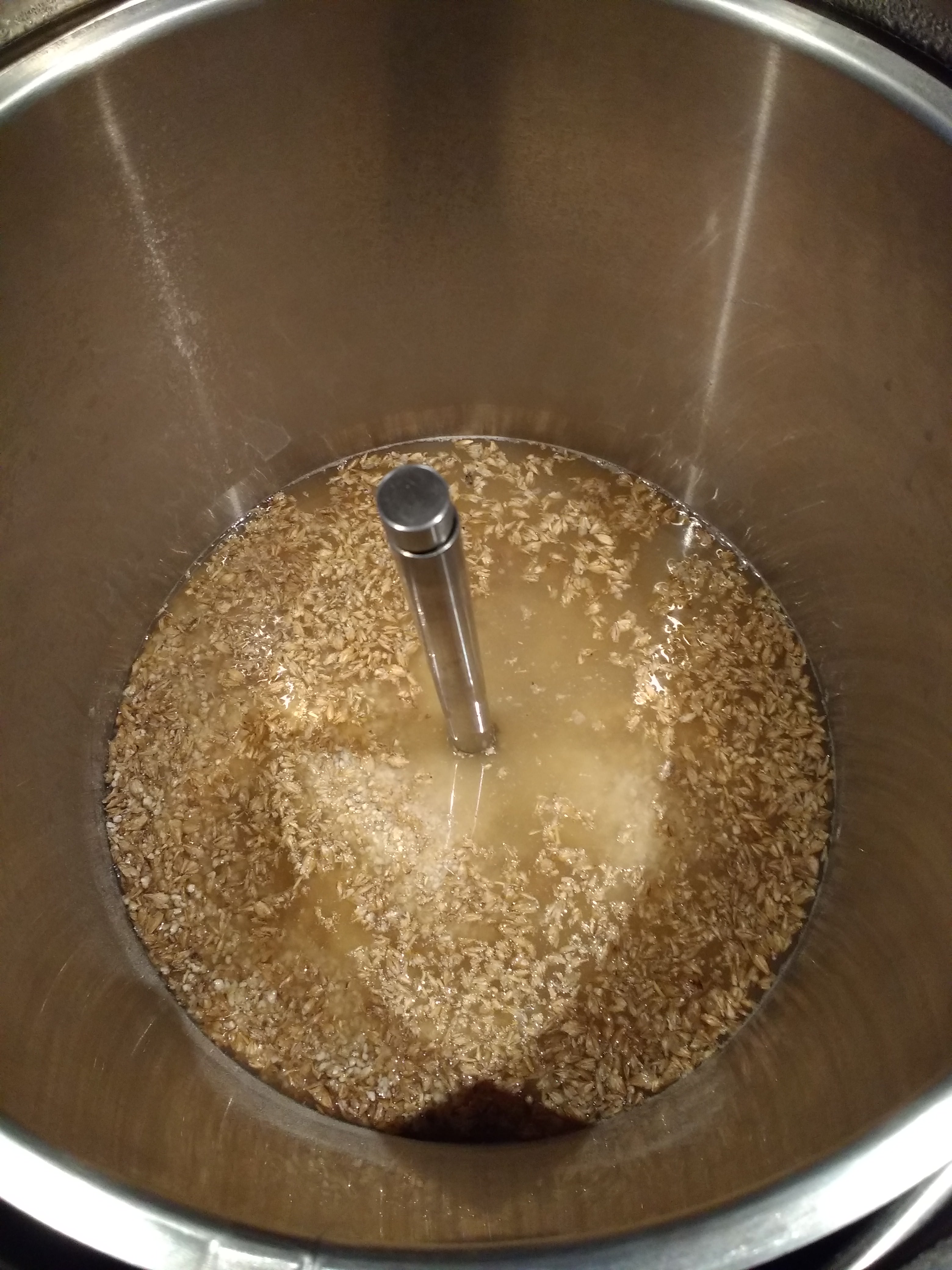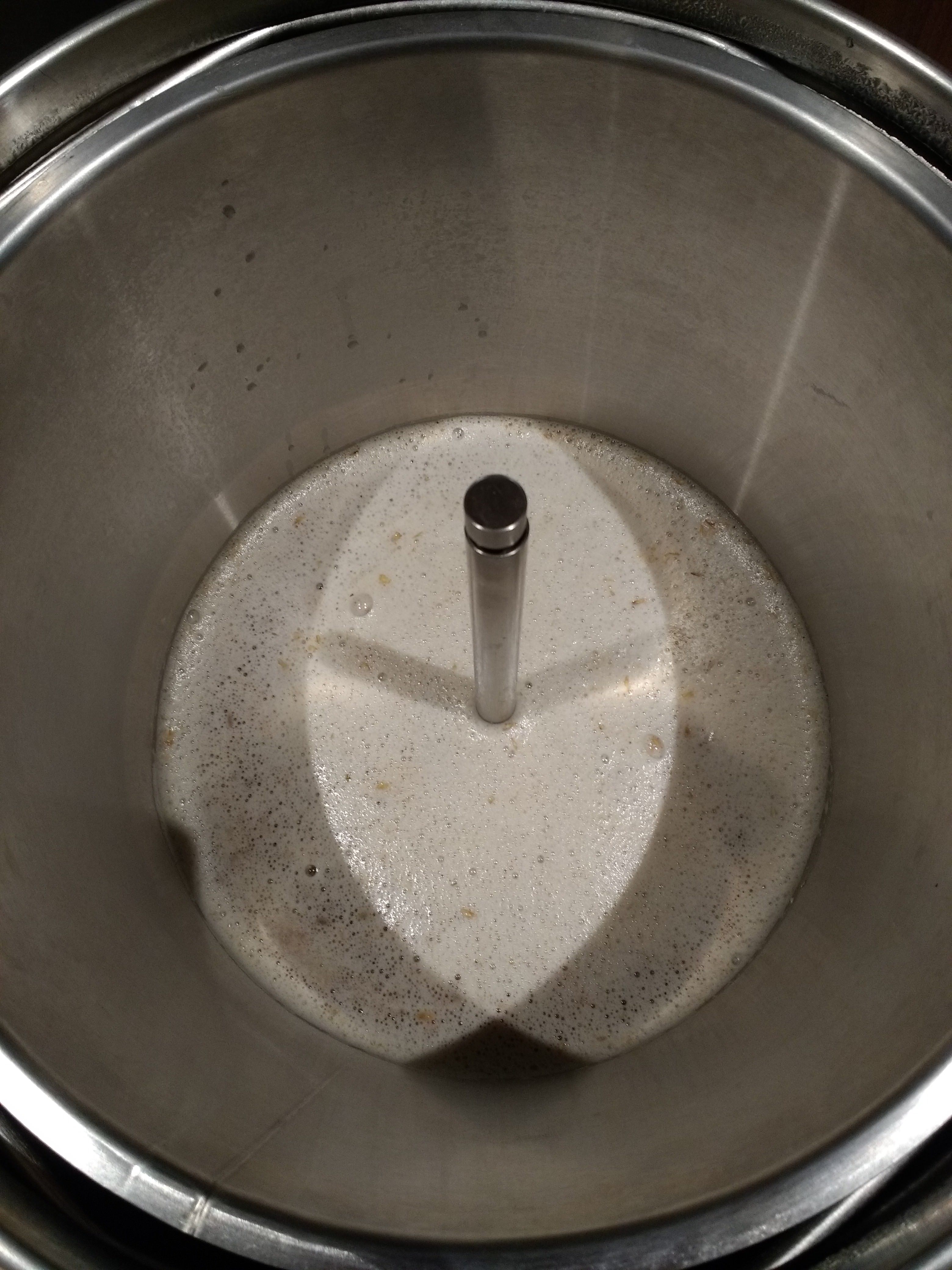Okay an update on this...
I'm brewing a kolsch today and tried using this underletting method. So I set the grain basket in the sparge position like so...
Then I chucked a handful of oat husks into the bottom of the basket and poured the the grain on top thusly...
Out of curiosity I lifted the basket to see how much "stuff" had fallen through the mesh, not much at all as it happens...
Then I slowly lowered the basket into the preheated strike water. The grain has a tendency to float if lowered too quickly so just slow it down a little and let the water seep up through the grain. This is how it looked before stirring...
It took very little effort to get it well mixed in, and significantly less time than usual. This is it after a brief (30 sec) stir with the paddle...
Mash pH after 15 mins...
Now this part's interesting (
warning, only proceed if you're a gobs*ite science type!) We often hear that starch conversion is complete after only 15 or 20 mins, so I checked the conversion efficiency at 2 different points during the mash.
The estimated maximum extract content according to
Braukaiser's formula includes the variable of average laboratory extract which is only available from the malt analysis, but using 80% is usually pretty close.
As it turns out that was a little low, so using the
actual* 100% conversion efficiency, these are the results:
After 15 mins at 55ð and 30 mins at 63ð the conversion efficiency was 81%. That's quite significant, because according to Braukaiser if your CE is lower than 90% then you need to have a serious look at your mash parameters.
I then stepped up from 63ð to 70ð for 30 mins, and after this rest the CE was at 100% :thumb:
So I found it interesting that after about 50 mins (including ramp up time) the CE was pretty far from complete. Now that could be down to many factors, the dough-in method, not stirring enough, the low mash temperature etc. but this example shows that conversion
isn't necessarily complete after 20 mins. That's not to say it can't be though; under certain circumstances it may well be, but I don't plan reducing my mash times any time soon.
As of now (just coming to the boil) the preboil SG is indicating that I'm a few points higher than expected and currently on par for 81% BHE which is the highest I've got with the GF. So I suppose the conclusion
for me is that underletting is quicker, easier and has no negative impact on BHE.
*An assumption based on the fact that my CE was >100% according to BK's formula.
Edit to add: I've just checked the actual BHE and it's 80%, result :thumb:






![BREWING THERMOMETER STICKERS ACCURATELY MONITOR FERMENTING BEER & WINE LIQUID TEMPERATURES 5PCS HOME BREW SPIRITS WINE LCD ADHESIVE [US]](https://m.media-amazon.com/images/I/311DDjo2X3L._SL500_.jpg)



































